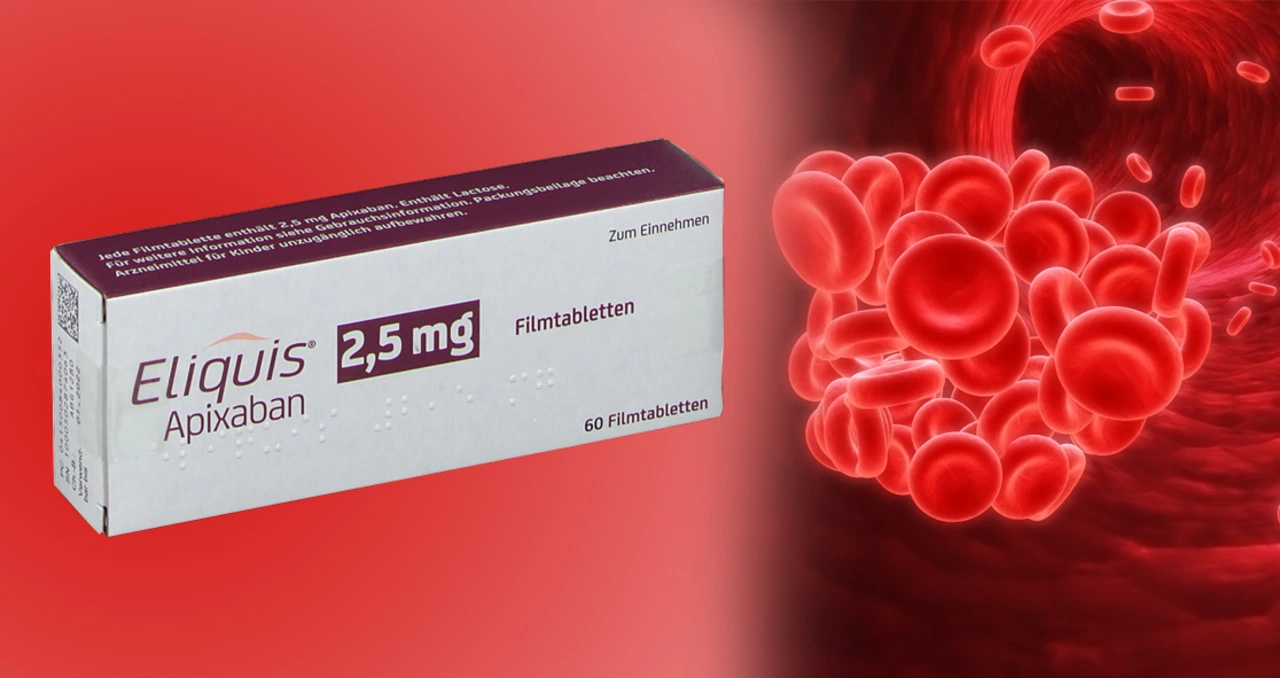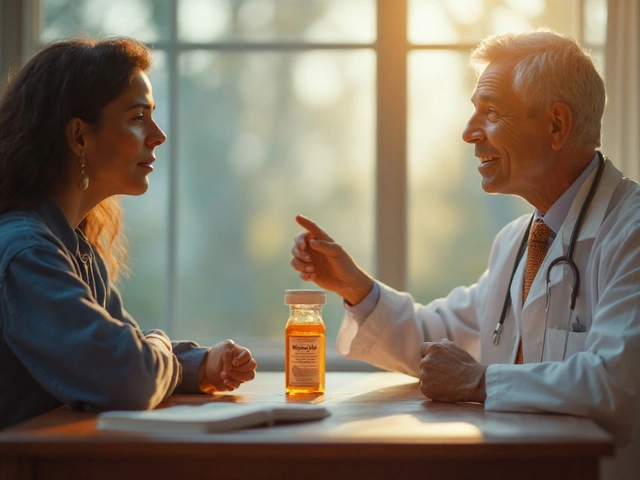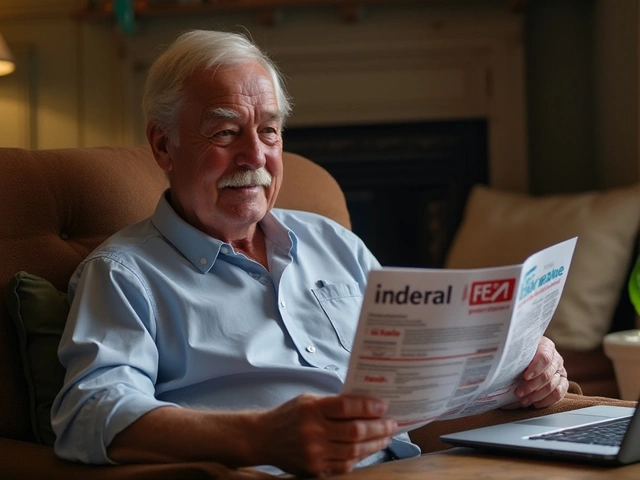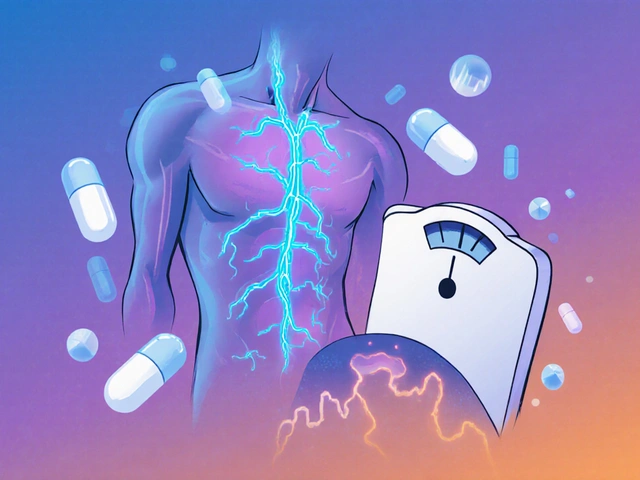Apixaban and Skin Reactions: What to Watch Out For

Understanding Apixaban and Its Uses
Apixaban, also known as Eliquis, is a widely prescribed anticoagulant medication that helps prevent blood clots in patients with certain conditions, such as atrial fibrillation, deep vein thrombosis (DVT), and pulmonary embolism (PE). Apixaban works by inhibiting the formation of blood clots by blocking the action of Factor Xa, a key component of the coagulation process.
As with any medication, it's essential to be aware of potential side effects, including skin reactions. In this article, we will explore the various skin reactions that may occur while taking Apixaban and provide guidance on what to watch out for, as well as how to manage these symptoms.
Common Skin Reactions Associated with Apixaban
While Apixaban is generally well-tolerated, some patients may experience skin reactions as a side effect of the medication. These reactions can range from mild to severe and can include:
Rashes and Hives
Some patients may develop a rash or hives while taking Apixaban. These skin reactions typically appear as red, raised, itchy bumps on the skin, and can be localized or spread over a larger area. Rashes and hives can be uncomfortable, but they are usually not dangerous.
If you experience a rash or hives while taking Apixaban, it's essential to contact your doctor, as they may want to evaluate your symptoms and determine if any changes to your medication are necessary. In some cases, over-the-counter antihistamines or topical corticosteroids may be recommended to help alleviate the itching and inflammation.
Bruising and Petechiae
Apixaban can sometimes cause increased bruising or the appearance of small, red or purple spots on the skin called petechiae. These skin reactions are due to the blood-thinning effects of the medication and can occur more easily than usual or even without any apparent cause.
While these skin reactions may be concerning, they are generally not considered serious. However, it's essential to notify your healthcare provider if you notice any changes in your bruising or develop petechiae, as they may want to monitor your condition more closely or adjust your medication dosage.
Skin Discoloration and Hyperpigmentation
Some patients may experience skin discoloration or hyperpigmentation while taking Apixaban. This can appear as darker patches of skin or an overall darkening of the skin tone. The exact cause of this skin reaction is not well-understood, but it is believed to be related to the medication's effects on blood vessels in the skin.
Skin discoloration and hyperpigmentation are generally not harmful, but they can be distressing for some patients. If you experience this side effect, it's essential to discuss it with your doctor, who may be able to recommend treatments or adjustments to your medication to help alleviate the issue.
Severe Skin Reactions: When to Seek Immediate Medical Attention
While most skin reactions associated with Apixaban are mild and manageable, there are some severe skin reactions that require immediate medical attention. These include:
Stevens-Johnson Syndrome (SJS) and Toxic Epidermal Necrolysis (TEN)
Stevens-Johnson Syndrome (SJS) and Toxic Epidermal Necrolysis (TEN) are rare but serious skin reactions that can be life-threatening. These conditions are characterized by the widespread blistering and peeling of the skin, often accompanied by fever and flu-like symptoms.
If you develop any signs of SJS or TEN while taking Apixaban, such as widespread blisters, skin peeling, or a painful rash, it's crucial to seek immediate medical attention. These conditions can progress quickly and may require hospitalization and intensive care to manage.
Angioedema
Angioedema is another rare but potentially severe skin reaction that can occur while taking Apixaban. This condition involves the rapid swelling of the skin, often around the face, lips, tongue, or throat, and can cause difficulty breathing or swallowing.
If you experience any signs of angioedema, such as sudden facial swelling or difficulty breathing, it's essential to seek immediate medical attention, as this condition can be life-threatening if not treated promptly.
Preventing and Managing Skin Reactions
While it's not always possible to prevent skin reactions while taking Apixaban, there are steps you can take to minimize your risk and manage any symptoms that may develop. These include:
Regular Check-ups and Monitoring
Regular check-ups with your healthcare provider are crucial for monitoring your response to Apixaban and addressing any side effects that may arise. Be sure to report any skin reactions or other concerns to your doctor, who can help determine the appropriate course of action.
Protecting Your Skin
Taking care of your skin by keeping it clean, moisturized, and protected from the sun can help minimize your risk of developing skin reactions while taking Apixaban. Be sure to use gentle cleansers and moisturizers, as well as broad-spectrum sunscreen with an SPF of 30 or higher to protect against both UVA and UVB rays.
Identifying Triggers
If you notice that certain factors, such as exposure to sun, heat, or specific foods, seem to trigger skin reactions while taking Apixaban, try to identify and avoid these triggers as much as possible. This can help minimize the frequency and severity of your symptoms.
Conclusion
Apixaban is an essential medication for many patients at risk for blood clots, but it's crucial to be aware of potential skin reactions and know what to watch out for. By staying informed, regularly communicating with your healthcare provider, and taking steps to protect and care for your skin, you can minimize your risk of experiencing these side effects and manage any issues that may arise.




tim jeurissen
While the article is generally accurate, a few nuances deserve clarification. Apixaban inhibits Factor Xa, not the entire coagulation cascade, and this distinction influences monitoring protocols. Moreover, the term “hyperpigmentation” should be qualified as a rare dermatologic manifestation, not a common side effect. Readers should consult the prescribing information for precise dosing guidelines.
lorna Rickwood
Life itself is a canvas of ink and blood the way drugs mingle with our flesh is akin to a dialogue between destiny and chemistry we must pause and wonder why a simple pill can paint such vivid hues upon our skin the ripple effect of apixaban reminds us that every choice reverberates across the dermal plains, occasionally leaving a mark that tells a story of unseen battles
Mayra Oto
For anyone on apixaban, incorporating a gentle skincare routine can make a big difference. Use fragrance‑free moisturizers, avoid harsh scrubs, and apply broad‑spectrum sunscreen daily. If you notice unusual bruising, document it and share with your clinician during visits.
S. Davidson
Frankly, the original post glosses over the severity of angioedema; dismissing it as “rare” borders on negligence. Patients should be warned that swelling can compromise airways within minutes, and an epinephrine auto‑injector should be considered for high‑risk individuals. Ignoring these warnings does a disservice to the community.
Haley Porter
From a pharmaco‑dynamic perspective, the interplay between apixaban's selective Factor Xa inhibition and cutaneous microvascular integrity warrants deeper exploration. The resulting hemostatic perturbation may predispose to petechial eruptions, especially in individuals with concomitant platelet dysfunction or systemic inflammation. Moreover, the cytokine cascade triggered by subclinical endothelial injury can amplify melanocyte activity, potentially explaining the observed hyperpigmentation phenomena. Clinicians ought to integrate dermatologic assessment into routine anticoagulation follow‑up, perhaps employing dermoscopy to differentiate drug‑induced lesions from unrelated dermatoses.
Samantha Kolkowski
Looks solid, thanks for the rundown.
Nick Ham
All that jargon is just smoke; the drug works fine.
Jennifer Grant
When the veil of the bloodstream thins under apixaban, the skin becomes a silent witness to the invisible war. Each tiny bruise tells a story of capillary surrender, a fleeting acknowledgement that the clotting cascade has been tampered with. The philosophical mind may ask whether such manifestations are merely side‑effects or profound dialogues between medicine and the body’s own narrative. In ancient texts, the color of the skin was often linked to the soul’s balance; today, a rash may signal a biochemical imbalance. Yet, modern science frames this as immunologic hypersensitivity, a cascade of histamine and interleukin release.
Consider the paradox: a drug designed to prevent lethal clots can introduce a superficial vulnerability. This duality mirrors the human condition-protecting the heart while exposing the surface. The hyperpigmentation observed in some patients could be interpreted as the skin absorbing the “memory” of clotting inhibition, an epigenetic imprint that persists beyond the pharmacologic window. Some clinicians advocate prophylactic moisturizers, arguing that barrier reinforcement mitigates the inflammatory response.
From a practical standpoint, patients should be instructed to monitor for any change in skin texture, color, or sensation, and report promptly. Early detection of SJS or TEN, though rare, can be lifesaving; the hallmark is rapid epidermal necrosis accompanied by fever. Angioedema, another critical event, demands immediate airway assessment. Lifestyle factors-sun exposure, diet, stress-may modulate the severity of these cutaneous reactions, suggesting a holistic approach is beneficial. Ultimately, the decision to continue apixaban hinges on a risk‑benefit analysis that weighs thrombotic prevention against dermatologic distress. As we navigate this terrain, empathy and vigilance remain our compass.
Kenneth Mendez
Honestly, they don’t want you to know how pharma pulls strings with these “side‑effects” to keep you hooked on endless prescriptions – it’s all part of the grand control scheme.
Gabe Crisp
Spreading baseless conspiracy only fuels fear; we have a duty to trust vetted medical guidance and not undermine public health with paranoia.
Paul Bedrule
In the ontology of therapeutic agents, apixaban occupies a liminal space where the material substrate of coagulation intersects with the phenomenology of cutaneous expression.
yash Soni
Wow, because reading a 16‑sentence essay about skin really changes my decision to take a life‑saving anticoagulant. 🙄